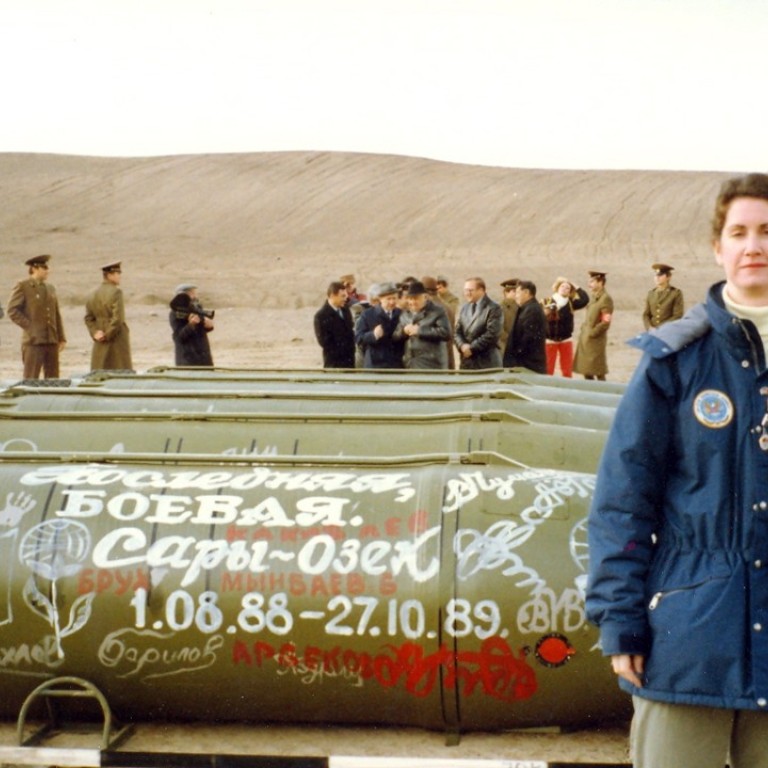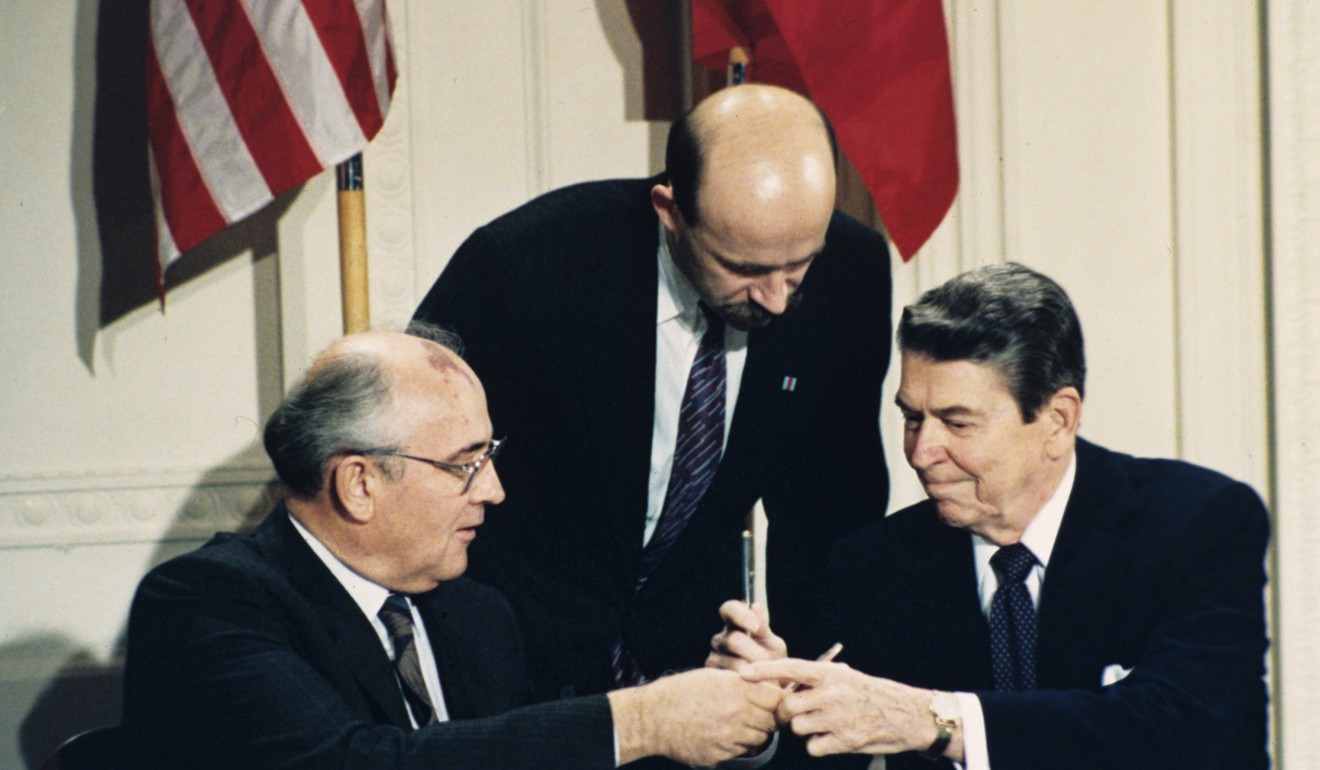
Going nuclear: 5 things to know about the INF Treaty with Russia that Trump wants to dump
- These are some of the issues at stake
US President Donald Trump has declared his intention to withdraw from a landmark nuclear weapons treaty, a move the Kremlin warned would “make the world a more dangerous place”.
Trump’s National Security Adviser John Bolton has met with Russian President Vladimir Putin and his top officials to explain the motives behind Trump’s plan to pull out from the Intermediate-Range Nuclear Forces (INF) Treaty.
What is the INF Treaty?
The pact was signed by US President Ronald Reagan and Soviet President Mikhail Gorbachev in 1987. It eliminated an entire class of ground-launched ballistic and cruise missiles with a range of 500 to 5,500km (300 to 3,400 miles), obliging each country to destroy their stockpiles and banning their deployment.
By June 1991, the US destroyed 846 such missiles and the Soviet Union dismantled 1,846 of them in accordance with the treaty.
A 10-year period of on-site inspections followed to verify the compliance.
The INF Treaty has been widely hailed as a cornerstone of strategic stability, helping to ease US-Soviet tensions and put an end to the cold war-era arms race.
Why the US withdrawal?
Trump stated that it makes no sense for the US to continue adhering to the agreement because of Russia’s alleged violations and also due to the fact that the pact hasn’t involved China. He said that the US could respect the ban on such weapons only if Russia and China pledge not to develop them.
Bolton and other US critics of the treaty also say that it prevents the US from mounting an effective response to intermediate-range missiles deployed by China.
Trump didn’t spell out Russian violations, but US officials have repeatedly accused Russia of testing and deploying a cruise missile in violation of the treaty’s limits.
What does Russia say?
Russia has strongly denied any violations and, in its turn, accused the US of breaching the treaty.
Russian officials have claimed that US missile defence facilities in Romania could be used to contain ground-to-ground intermediate-range cruise missiles in violation of the INF.
They also charged that US launches of target vehicles as part of missile defence tests also represented another breach of the pact.
Moscow has proposed to hold talks to discuss the mutual complaints.

Why does the US exit from the treaty matter?
Some politicians in the US and Europe fear that the US walkout could spur a new arms race in which the US and Russia would build up their nuclear arsenals, further eroding global stability.
Intermediate-range ballistic missiles take just a few minutes to reach their targets in Europe, a much shorter flight time compared to intercontinental ballistic missiles.
That would leave practically no time for political leaders to weigh a response after getting a warning about a missile attack, increasing the chance that a false alarm could trigger a global nuclear conflict.
Trump’s move has caused a mixed reaction among US allies. Britain has voiced support, while Germany expressed concern, saying it touches on core European interests.
The European Union urged the US to consider the consequences, noting that “the world doesn’t need a new arms race that would benefit no one and on the contrary, would bring even more instability.”
Are there any other US-Russian nuclear arms reduction agreements?
The only other US-Russian nuclear arms reduction deal is the New START Treaty that went into force in 2011 and is set to expire in 2021. It limits the number of nuclear warheads and their launchers, restricting the US and Russian nuclear arsenals to no more than 1,550 deployed warheads for each country.
Bolton and Russian officials have discussed the possibility of extending the pact by five years, but no specific arrangements have been made yet.

